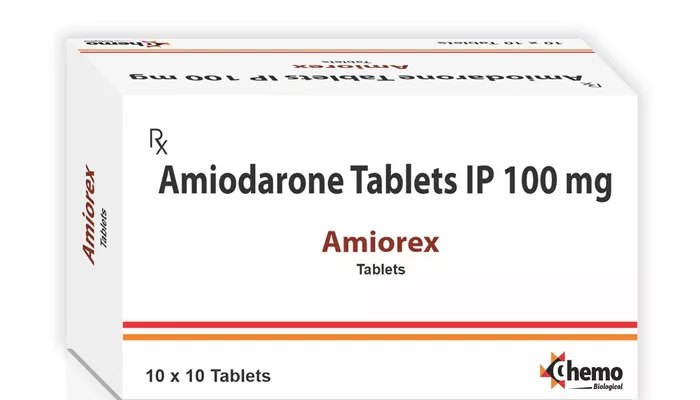Amiodarone is a potent antiarrhythmic medication widely used to manage various types of arrhythmias. Its broad spectrum of action and effectiveness in controlling heart rhythm disorders make it a cornerstone in the treatment of these conditions.
This article delves into what arrhythmias amiodarone is used for, highlighting its mechanisms, benefits, and the types of arrhythmias it addresses.
What Is Amiodarone?
Amiodarone is a class III antiarrhythmic drug that affects the heart’s electrical impulses. It is commonly prescribed for patients with serious arrhythmias when other treatments are ineffective or not tolerated. Its unique properties make it suitable for a range of arrhythmias, from atrial fibrillation to ventricular tachycardia.
SEE ALSO: Which Human Organ Is Affected by Arrhythmia?
Mechanism of Action
Amiodarone works by modifying the electrical conduction within the heart. It primarily affects potassium channels, prolonging the repolarization phase of the cardiac action potential. This prolongation helps to stabilize the heart’s rhythm and prevent abnormal heartbeats. Additionally, amiodarone has secondary effects on sodium and calcium channels, which contribute to its broad-spectrum efficacy.
Types of Arrhythmias Treated by Amiodarone
Atrial Fibrillation (AF)
Atrial fibrillation is a common arrhythmia characterized by rapid and irregular beating of the atria. Amiodarone is used to control the heart rate and restore normal sinus rhythm in patients with persistent or paroxysmal AF. It is particularly beneficial for patients who do not respond well to other rate or rhythm control medications.
Atrial Flutter
Similar to AF, atrial flutter involves abnormal electrical impulses in the atria, leading to a rapid heart rate. Amiodarone helps to convert atrial flutter to normal sinus rhythm and can also be used for rate control. It is often used in combination with other therapies such as catheter ablation for more effective management.
Ventricular Tachycardia (VT)
Ventricular tachycardia is a potentially life-threatening arrhythmia that originates in the ventricles. Amiodarone is effective in terminating VT and preventing its recurrence. It is often used in acute situations or for long-term management in patients with recurrent VT, especially those with structural heart disease.
Ventricular Fibrillation (VF)
Ventricular fibrillation is a severe and life-threatening arrhythmia where the ventricles quiver instead of contracting effectively. Amiodarone is used in the emergency setting, often alongside defibrillation, to restore normal rhythm. Its role in VF management is critical in both in-hospital and out-of-hospital cardiac arrest scenarios.
Supraventricular Tachycardia (SVT)
Supraventricular tachycardia refers to a rapid heart rate originating above the ventricles. Amiodarone can be used to terminate SVT episodes and maintain normal rhythm. It is particularly useful in cases where other treatments like adenosine or vagal maneuvers are ineffective.
Administration And Dosage
Amiodarone can be administered orally or intravenously, depending on the clinical situation. For chronic management, oral dosing is common, with the typical starting dose being 200 to 400 mg daily, adjusted based on the patient’s response and side effects. In acute settings, intravenous amiodarone is used, with dosing tailored to the severity of the arrhythmia and the patient’s clinical condition.
Side Effects And Considerations
While amiodarone is highly effective, it is not without potential side effects. Common adverse effects include:
Thyroid Dysfunction: Amiodarone contains iodine, which can lead to thyroid abnormalities, including hypothyroidism or hyperthyroidism.
Pulmonary Toxicity: Prolonged use can cause interstitial lung disease or pulmonary fibrosis.
Hepatic Effects: Liver enzyme abnormalities and hepatotoxicity may occur.
Skin Changes: Photosensitivity and a blue-gray discoloration of the skin can develop with long-term use.
Patients on amiodarone require regular monitoring of thyroid function, liver enzymes, and pulmonary health to manage these risks.
Conclusion
Amiodarone remains a vital tool in the management of various arrhythmias due to its broad spectrum of action and effectiveness. By understanding its role in treating conditions like atrial fibrillation, atrial flutter, ventricular tachycardia, ventricular fibrillation, and supraventricular tachycardia, healthcare providers can make informed decisions about its use.
While it offers significant benefits, careful monitoring is essential to mitigate potential side effects and ensure optimal patient outcomes. In summary, amiodarone is a versatile antiarrhythmic medication that plays a crucial role in the management of numerous arrhythmias, offering hope and improved quality of life for many patients struggling with these complex heart rhythm disorders.

